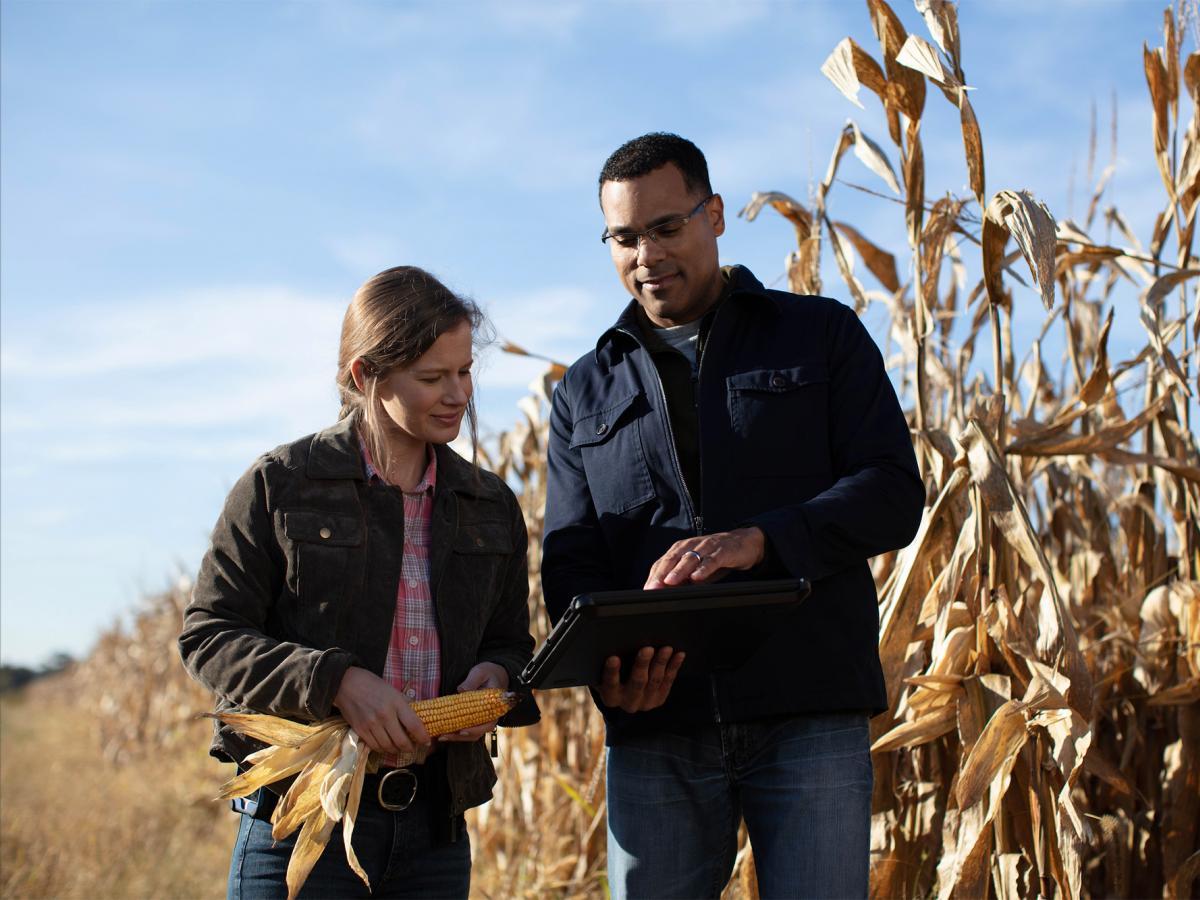How Farms are Fighting Climate Change
Farmers aren’t just on the front lines battling the effects of climate change, they’re actively working to address its root causes.

Humanity has a give-and-take relationship with the earth. What we use, we must try to replace. A simple idea, but it will take the best of human ingenuity to accomplish. Few people understand this more than those who grow our food.
Farmers rely on consistent weather patterns, and make weather-based decisions every day that affect the well-being of their crops. So, when those patterns become less predictable or more extreme due to a changing climate, they’re forced to find new solutions. Through new innovations and ever-evolving practices, agriculture is not only reacting to climate change, but working to mitigate it.
Fighting climate change on the farm
A changing climate can mean droughts are drier, rains are heavier, and winds and extreme weather are more threatening to crops. However, innovations in agriculture are helping farmers navigate these tough climate conditions.
Not all farms are flat. Most have high spots that dry quickly and low spots where water collects. Today, remote sensors can measure things like moisture, nitrogen and phosphorus levels in the soil, and tell farmers when one area might be desperate for water, and when another has plenty. This information can be crucial during a drought when farmers need to be more strategic with their water.
What else could be useful during a drought? How about a crop that’s bred to tolerate it? Drought tolerant seeds help farmland stay productive during dry times. And, when the weather gets turbulent, we have plans for that, too. Bayer is looking forward and actively developing, solutions like short stature corn—a variety that’s bred to grow lower to the ground. That way, it’s less likely to snap in high winds, which reduces crop loss after a storm.
Fighting climate change with the farm
Carbon is a dirty word these days, but there is nothing inherently wrong with the sixth element on the periodic table. In fact, it’s essential to life on earth. The problem is when too much carbon dioxide is dumped unchecked into the atmosphere. Bayer is committed to advancing a carbon-neutral future for agriculture. A key part of this is reducing greenhouse gas emissions in agriculture fields. Through digital tools, improved plant genetics, and better water and soil management, Bayer is committed to reducing field greenhouse gas emissions produced by key crops in major agricultural markets by 30 percent by 2030.
Curbing methane emissions with stronger rice
By 2050, the worldwide demand for rice will double. Adding to this challenge is the increasing irregularity of water sources globally, especially in parts of Asia where most of the world’s rice is grown.
Traditional rice transplanting, which requires farmers to manually transplant young seedlings into flooded paddies one-by-one, is labor and water-intensive—requiring about 5000 liters to produce one kilogram of rice. And, it creates an environment conducive to methane-emitting bacteria. That’s why Bayer has developed new hybrid varieties of rice that can be planted directly into dry fields.
Hybrids have a 19 percent lower carbon footprint than other traditional varieties and can be planted from tillers. These innovations are curbing methane emissions, reducing water dependence, and helping to relieve the manual labor burden on farming families throughout Asia.
Let it lie
Traditionally, farmers turned their fields over at the end of each season to remove weeds, but better weed control solutions mean they can leave the soil undisturbed after harvest. This has a two-fold benefit for the climate—it helps trap carbon in the soil for growing plants to use, and it reduces CO2 emissions by cutting tractor runtime. Like many modern agricultural practices, conservation tillage saves farmers resources like time and energy while being more sustainable.
Preserving biodiversity
Conservation means doing what’s necessary while using less. Before the Green Revolution—a period of crucial advancements in plant biology during the middle of the 20th century—growing a bushel of corn took three times the amount of land it takes today.
Our planet isn’t getting any bigger, but our demands of it are. That’s why agriculture is finding ways to grow enough on the land we already use for farming. More efficient seeds allow for better harvests without expanding agricultural land. This encourages biodiversity and preserves “carbons sinks” like forests that sequester greenhouse gasses through natural processes.
At the same time, new digital tools and data analytics that measure and control inputs—like water, fertilizer, and crop protection—are helping farmers grow enough without starving the planet.
The air around us
The invention of nitrogen fertilizers allowed farmers to meet the food demands of a growing global population over the 20th century. This innovation fed billions of people and saved countless lives. But, today, three percent of the world’s greenhouse gas emissions come from the use and production of these fertilizers. That’s why Bayer has partnered with Ginkgo Bioworks to form Joyn Bio, a joint venture that’s looking to use soil microorganisms and their nitrogen-fixing genes to help crops like corn, wheat, and rice extract nitrogen directly from the air, lowering farmers’ dependence on synthetic fertilizers. A more sustainable future means finding better answers to even our best solutions.
As the climate changes, so will agriculture. Solutions like the ones Bayer is working to create help farmers curb greenhouse gas emissions and preserve natural resources. Climate change is a threat we all have to address and innovations in science and technology are helping farmers lead the way.

